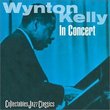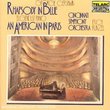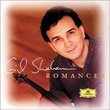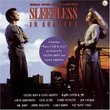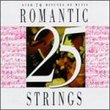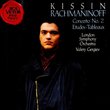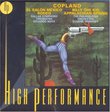| All Artists: Ludwig van Beethoven, Nikolaus Harnoncourt, Chamber Orchestra of Europe, Vadim Sakharov Title: Ludwig van Beethoven: Violin Concerto in D major, Op. 61 / Romance in G major, Op. 40 / Romance in F major, Op. 50 - Gidon Kremer / Chamber Orchestra of Europe / Nikolaus Harnoncourt Members Wishing: 0 Total Copies: 1 Label: Warner Music France Release Date: 6/8/1993 Album Type: Import Genre: Classical Styles: Forms & Genres, Concertos, Historical Periods, Classical (c.1770-1830), Instruments, Strings Number of Discs: 1 SwapaCD Credits: 1 UPC: 090317488127 |
Search - Ludwig van Beethoven, Nikolaus Harnoncourt, Chamber Orchestra of Europe :: Ludwig van Beethoven: Violin Concerto in D major, Op. 61 / Romance in G major, Op. 40 / Romance in F major, Op. 50 - Gidon Kremer / Chamber Orchestra of Europe / Nikolaus Harnoncourt
CD DetailsSimilar CDs
Similarly Requested CDs |
CD ReviewsDisappointing John Kwok | 09/22/1999 (2 out of 5 stars) "Granted that opinions on music performances are mostly subjective, it is perhaps not surprising that the "rave reviews" for this particular recoring in the 1999 Gramophone Good CD Guide and 1996 Penguin Guide to CDs are almost identical. (It seems that Edward Greenfield and Robert Layton author both.) Unfortunately, they fail to point out, that despite the fancy equipment at Teldec, the audio level is annoyingly weak and requires that you must crank up the volume just to make the violin more present. Having listened to about 12 versions of the Beethoven Violin Concerto, Op. 61, the Kremer/Harnoncourt did not measure up to the reviewers' predictions. In theory, incorporation the cadenza from Beethoven's piano arrangement of the concerto may find academic support somewhere, but the actual use of a piano produces musical results that are equivalent to mixing oil colors in the middle of a watercolor painting; it just doesn't work. Even the lengthy Henryk Szeryng/ Bernard Haitink on Philips is, by far, more successful and better recorded. If you want to hear the true beauty of this violin concerto, try the fabulous Milstein/Steinberg, the monumental Menuhin/Furtwangler, or the dramatic Schneiderhan/Jochum, just for starters." Deconstruction of Beethoven... Popescu Lucian | Bucharest, Romania | 07/23/2005 (3 out of 5 stars) "The reason why I bought this recording was simply because I wanted a more historically informed performance of Beethoven's Violin Concerto. Accounting its structure, this is an arch-classical concerto. There is no sentimentality, no showy passages, just music of the highest order, beautiful, profound, never leaning towards artifice. Beethoven's Violin Concerto represents the pinacle of violin repertoire, staying shoulder to shoulder with Bach's Sonatas and Partitas for Solo Violin. Once again, nowhere does any leaning towards romanticism become apparent. Most performers have paid little if any consideration for these facts, hampering with orchestration as if it was their own concerto, downgrading the violin parts to mere virtuoso passages proving one's technical valor and adopted fluctuations of tempi that should be evicted from a classical concerto performance. Beethoven was a master orchestrator. Nobody except Bach comes close with his intense knowledge of the instruments in usage. He knew EXACLY how and when they should blend in, what is the amount to provide a certain effect, why is an instrument preferable and why the other is not. When a modern performer chooses to alter orchestration, add more strings, change the nature of instruments, disrespect Beethoven's own meticulous indications of tempi, means he is in service of himself rather than Beethoven. It implies thinking of these works as imperfect, asking for being "corrected" thanks to one's superior knowledge. This is why historically uninformed performances rarely fail of being ridiculous. Harnoncourt's Chamber Orchestra of Europe is an accomplished team who uses modern instruments performed in a historically informed way. The reasons why modern rather than older instruments are to be used for the particular case of Beethoven are many. Unlike Bach or Mozart, Beethoven was never happy with the instruments of his day, pointing out over and over their imperfections and inability to sustain loud powerful notes. A key aspect is how Harnoncourt keeps exactly the same level of orchestration envisioned by Beethoven. He adds not a single instrument. He relies on Beethoven for work's architecture and does so justly. Also his tempi always sound right, for the very reason they follow Beethoven's own indications. Taking all these aspects into account, I had very high expectations from this CD. Quite expectedly, the orchestral support is brilliant. Instruments sing in thorough unison. They are far more potent than ones in Beethoven's days, but given the size of orchestra, the harmonies they create can be followed with ease. This is a giant leap forward compared to older recordings. Their sound is vigorous, powerful, yet subdued, never downgrading into caricatures typical of "Beethoven - The Revolutionary". The major problem is Kremer. A comparison with Heifetz will only make the other's problems even more painful. Heifetz, widely acknowledged as 20th century greatest violinist, makes you concentrate on the music rather than its extreme technical challenges. He sings brilliantly, with full conviction, bringing no sentimentality where it doesn't belong. Perhaps the first movement would have benefited from a bit slower tempi, but the dialogue between soloist and orchestra is exemplary. I find Kremer's playing simply unremarkable, unimaginative and rather boring. He has nothing to sell in a competition with Heifetz, Stern, Millstein, Menuhin, Szeryng or Grumiaux. In full classical tradition, Beethoven's Violin Concerto has marked places for cadenzas. Beethoven let the VC cadenza to performer's devices. The large majority of performers use the Alfred Schnittke's cadenza for unaccompanied violin. A few have attempted to create their own. Kremer has come with the otherwise acceptable solution to use the cadenza from Beethoven's own piano transcription of the concerto. But I couldn't believe my ears actually hearing the piano... The latter's presence is so contrived and so out of place that it breaks the unity of the piece. It makes it sound like patched morsels of different concerti. To make the problem even worse, this part is stretched far beyond acceptable limits, only to show off Kremer's technical prowess. This is pure deconstruction of Beethoven..." An Unconventional, Yet Definitive Beethoven Violin Concerto John Kwok | New York, NY USA | 05/22/2001 (5 out of 5 stars) "Traditionalists may not enjoy listening to the Kremer/Harnoncourt version of Beethoven's Violin Concerto. Not only does it lack the warmth associated with great recordings such as the definitive Perlman/Giulini recording, it contains a controversial adaptation of Beethoven's cadenzas to boot! Yet I have rarely heard the Violin Concerto played with such lyrical sweetness as I have from Kremer; his exquisite performance is commanding. And Harnoncourt gives a vibrant, brisk reading of the score with the Chamber Orchestra of Europe. Together, Kremer, Harnoncourt, and the Chamber Orchestra of Europe have wrought a compelling version of this great violin concerto.
" |


 Track Listings (5) - Disc #1
Track Listings (5) - Disc #1![header=[] body=[This CD is available to be requested as disc only.]](/images/attributes/disc.png?v=a4e11020)
![header=[] body=[This CD is available to be requested with the disc and back insert.]](/images/attributes/disc_back.png?v=a4e11020)
![header=[] body=[This CD is available to be requested with the disc and front insert.]](/images/attributes/disc_front.png?v=a4e11020)
![header=[] body=[This CD is available to be requested with the disc, front and back inserts.]](/images/attributes/disc_front_back.png?v=a4e11020)

